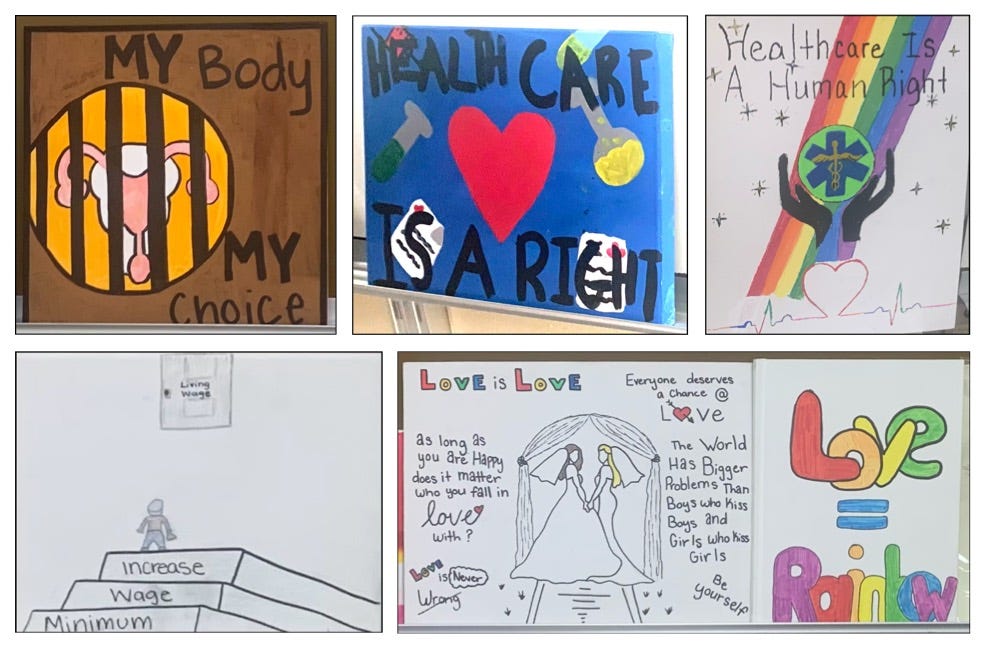Academic depth for controversial issues
How our classrooms can move from displaying slogans to students, to teaching them to apply critical thinking using objective data
In the Sheboygan Falls High School classroom where the Gender and Sexuality Alliance meets were displayed several student-created posters carrying controversial political messages: “My Body My Choice”, depicting a uterus behind bars; “Healthcare Is a Right”; “Healthcare is a Human Right”; “Increase Wage Minimum”; and “Love is Love”, depicting two women being married. There were no posters for opposing viewpoints.
The messaging in the posters falls under Policy 2240, Controversial Issues in the Classroom, which includes this philosophy of the District:
Properly introduced and conducted, the consideration of [controversial] issues can help students learn to identify important issues, explore fully and fairly all sides of an issue, weigh carefully the values and factors involved, and develop techniques for formulating and evaluating positions. In addition, the opportunity can lead students to learn about how to use critical thinking and problem-solving skills, to study and analyze relevant issues, evaluate different sources of information, make intelligent decisions regarding issues, and how to appreciate the value of differing viewpoints.
Student-created posters are an excellent opportunity to apply the academic depth called for. For example, a poster about abortion can describe the stages of development in utero, such as when a heartbeat begins and pain is felt. It can also describe the effects of pregnancy and birth on the mother, the effects of abortion on the mother and unborn child, and the options for family members after birth.
Likewise, a poster about a right to healthcare can describe and evaluate competing considerations, for example, those listed by Britannica ProCon topic on Universal Health Care, such as fairness, efficiency, costs, public health, and wait times. Similarly, posters can describe the economics of price floors and family and societal impacts of same-sex marriage.
Simple slogans and brief one-sided arguments do little to advance learning, but instead deepen the kind of polarization that the Controversial Issues policy seeks to avoid. This holds even to the extent that the posters represent art, since the message is the same.
Fairness to other students
The prominent display of the posters in the classroom also creates a fairness issue. All The many students who use the classroom every day are subjected to propaganda chosen by a select few students who create the posters. Unlike a school newspaper, which students can read some or all of at their discretion, students do not choose their classroom assignments. The school’s power to compel students’ presence in the classroom lays on it a heightened duty to ensure the neutrality of messages presented there.


